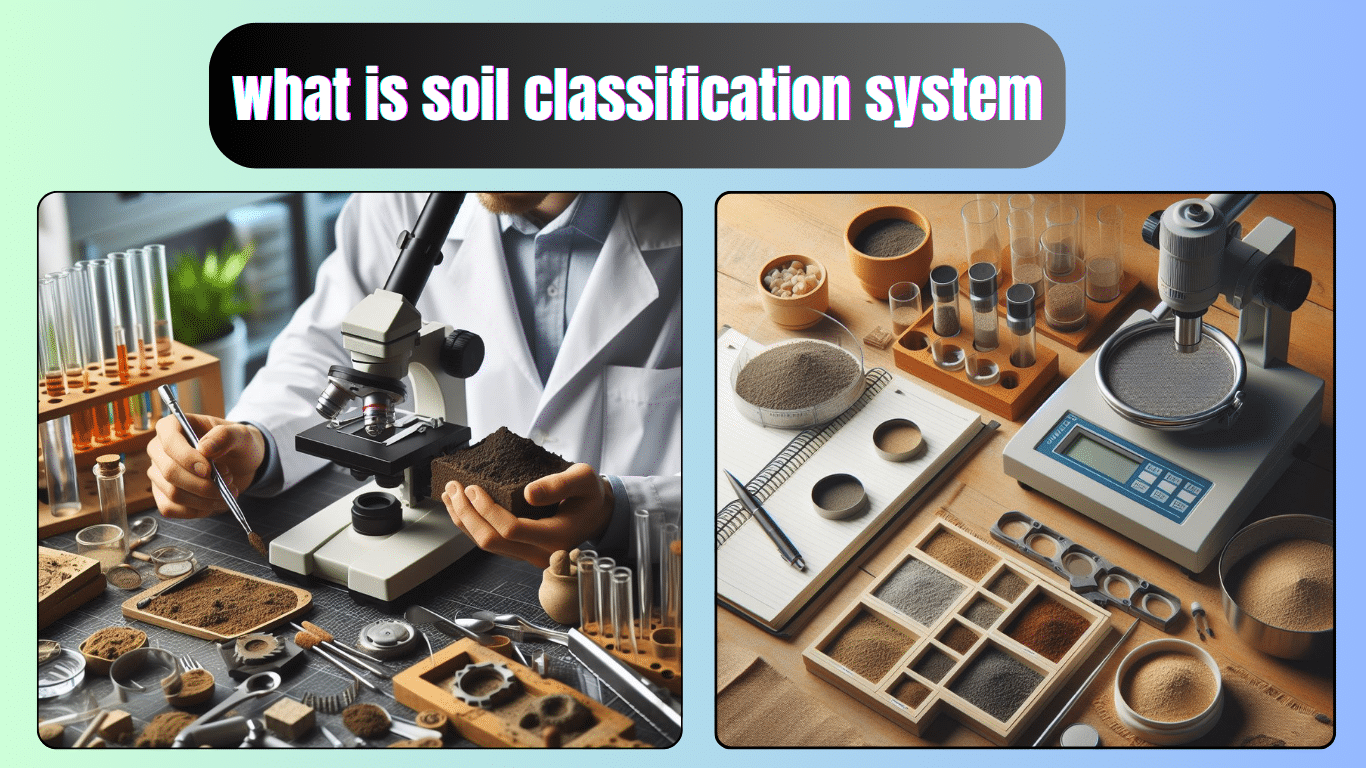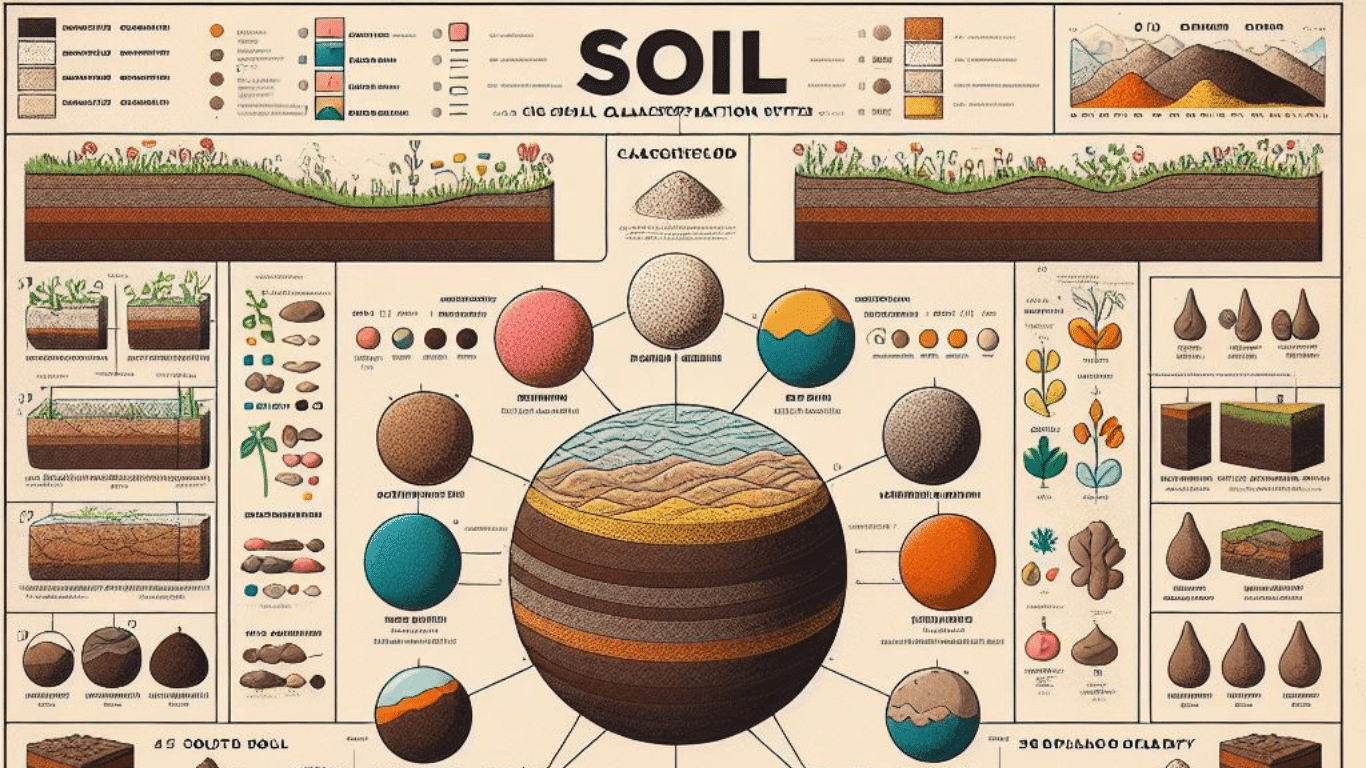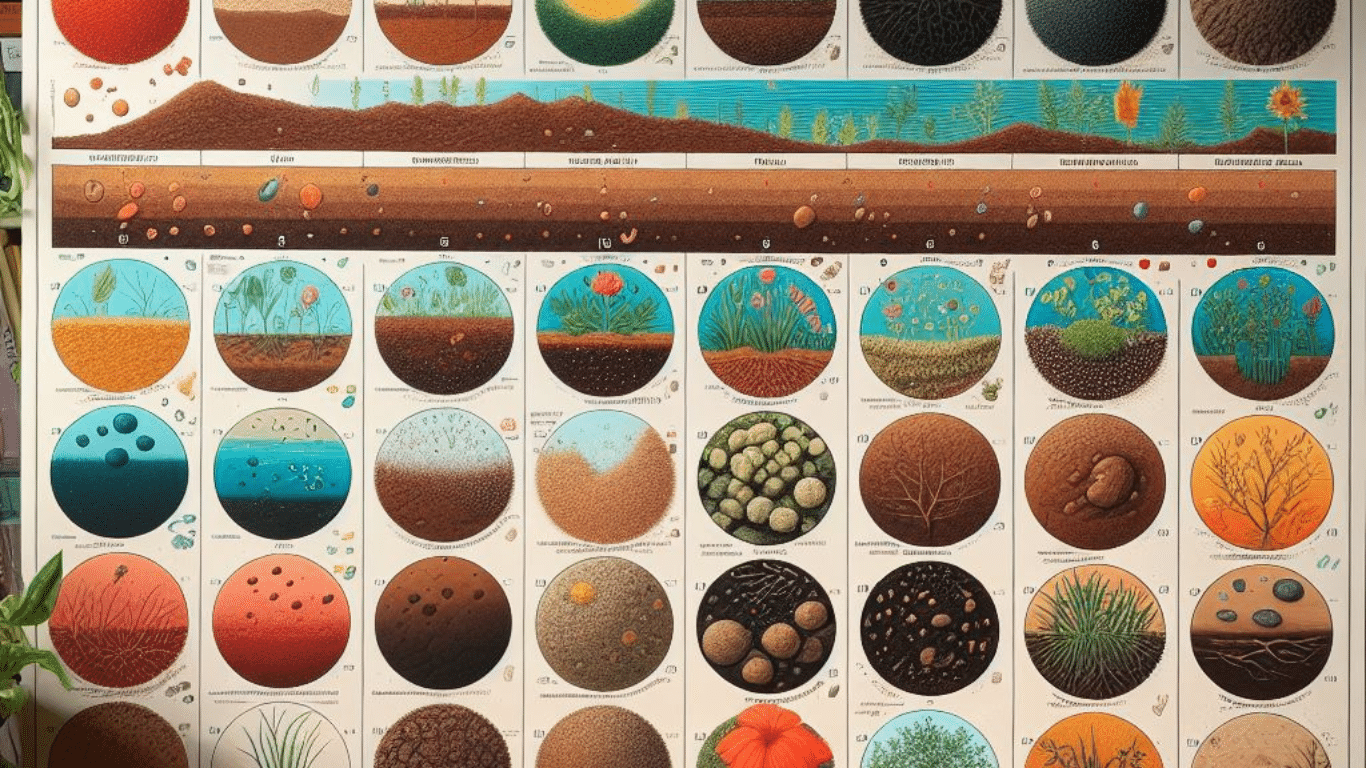A soil classification system is like a way of sorting out different types of soil, kind of like organizing a big pile of assorted candies into groups based on their colors or flavors. It helps scientists, farmers, and engineers understand soils better by categorizing them into groups based on their properties like texture, color, and how they’re formed.Further, we will learn what is soil classification.
This system makes it easier to communicate about soils and helps people make decisions about how to use them wisely, whether it’s for farming, building, or protecting the environment. Just like knowing the flavors of candies can help you pick your favorite, knowing the classification of soil can help people make smart choices about how to care for the land.
Understanding what is Soil Classification Systems
Soil, often referred to as the “skin of the Earth,” is a complex mixture of minerals, organic matter, water, air, and countless microorganisms. It plays a crucial role in supporting life by providing nutrients, water, and anchorage for plants. To better understand and manage soil, scientists have developed various classification systems.
What is soil classification system ?
Soil classification is the process of categorizing soils into groups based on their properties and characteristics. These systems help scientists, farmers, engineers, and environmentalists to communicate effectively about soil types and their suitability for different purposes.
Purpose of Soil Classification
The primary purpose of soil classification is to provide a systematic way of organizing information about soils. It helps in:
- Understanding Soil Behavior
- Land Use Planning
- Environmental Management
Understanding Soil Behavior: By categorizing soils, we can predict their behavior under different conditions, such as moisture content, load-bearing capacity, and erosion susceptibility.
Land Use Planning: Soil classification aids in determining the suitability of land for various uses like agriculture, construction, or conservation.
Environmental Management: It assists in assessing the environmental impact of activities such as mining, urban development, and pollution.
Types of Soil Classification Systems
There are several soil classification systems used worldwide. The most widely recognized ones include:
- USDA Soil Taxonomy
- FAO Soil Classification
- Unified Soil Classification System (USCS)
- World Reference Base for Soil Resources (WRB)
USDA Soil Taxonomy: Developed by the United States Department of Agriculture, this system classifies soils based on factors like texture, color, structure, and the presence of diagnostic horizons (distinct layers).
FAO Soil Classification: Created by the Food and Agriculture Organization, this system focuses on soil properties relevant to agriculture, such as fertility, drainage, and depth.
Unified Soil Classification System (USCS): Commonly used in engineering and construction, this system categorizes soils based on their particle size distribution and plasticity.
World Reference Base for Soil Resources (WRB): This system, established by the International Union of Soil Sciences, classifies soils based on their properties and environmental factors.
Key Components of Soil Classification
Regardless of the classification system used, soils are typically categorized based on the following criteria:
- Texture
- Structure
- Color
- Horizons
Texture: refers to the proportions of sand, silt, and clay particles in the soil. Soil texture influences properties like water retention, drainage, and aeration.
Structure: Describes the way soil particles are arranged into aggregates or clumps. Soil structure affects water movement, root penetration, and nutrient distribution.
Color: Soil color can indicate its fertility, drainage, and organic matter content. Darker soils usually contain more organic matter and nutrients.
Horizons: Soils often develop distinct layers or horizons over time, each with its own characteristics such as color, texture, and composition.
there are some general questions which are asked by the people on the internship,so here I ma going to discuss some of them
What is Soil Classification and Its Importance?
Soil classification is the process of categorizing soils into groups based on their properties and characteristics. This helps us understand the different types of soil and how they behave under various conditions. The importance of soil classification lies in its ability to provide valuable information for farmers, engineers, environmentalists, and policymakers. By knowing the properties of soil, we can make informed decisions about land use, agriculture, construction, and environmental management.
Full Form of Soil
The full form of soil is not an acronym; it simply refers to the mixture of minerals, organic matter, water, air, and microorganisms that cover the Earth’s surface and support plant life.
History of Soil Classification
Soil classification has a long history dating back to ancient civilizations. Early farmers recognized different types of soil based on their color, texture, and fertility. However, modern soil classification systems began to emerge in the 19th and 20th centuries with the advancement of scientific knowledge and technology. Today, various systems exist, each with its own criteria for categorizing soil types.
Smallest Unit of Soil Classification
The smallest unit of soil classification is the soil particle. Soil particles are categorized based on their size into three main types: sand, silt, and clay. These particles, along with organic matter and minerals, determine the overall properties of the soil.
Necessity of Soil Classification
Soil classification is necessary for several reasons. Firstly, it helps us understand the characteristics and behavior of different soils, which is essential for agricultural practices and land management. Secondly, it allows engineers to design structures that are appropriate for the soil conditions, reducing the risk of damage or failure. Finally, soil classification helps us assess the environmental impact of human activities such as mining, urbanization, and deforestation.
Soil Series Classification System
The soil series classification system is a method used to categorize soils into groups based on their similarities in texture, color, structure, and other properties. Each soil series represents a unique combination of these characteristics and is named after a geographic location where it is typically found.
Soil Classification in India
In India, soil classification is based on various factors, such as climate, geology, and topography. The Indian Council of Agricultural Research (ICAR) has developed a comprehensive soil classification system known as the Indian Soil Classification System. It categorizes soils into different classes and subclasses based on their genesis, texture, and fertility.
Main Objective of Soil Classification
The main objective of soil classification is to provide a systematic way of organizing information about soils. By categorizing soils based on their properties, we can better understand their behavior and suitability for different purposes. Ultimately, soil classification helps us make informed decisions about land use, environmental management, and sustainable development.
Conclusion
Soil classification systems are invaluable tools for understanding the diverse nature of soils and their roles in ecosystems. By systematically categorizing soils based on their properties, we can make informed decisions regarding land use, environmental management, and sustainable development. Whether you’re a farmer, engineer, or environmentalist, having a basic understanding of soil classification can enhance your ability to work with this precious resource effectively.
By following soil classification systems, we ensure that we treat soil with the respect it deserves, recognizing its importance in sustaining life on our planet.
Remember, the soil beneath our feet is not just dirt – it’s a dynamic and vital component of our natural environment. Let’s strive to protect and preserve it for future generations.
FAQs
What is soil classification?
Soil classification is the process of sorting soils into different groups based on their properties, like texture and color.
Why is soil classification important?
Soil classification helps us understand soil behavior and make decisions about how to use land effectively for agriculture, construction, and environmental conservation.
What does “soil” stand for?
“Soil” doesn’t stand for anything; it’s a term used to describe the mixture of minerals, organic matter, water, air, and microorganisms found on the Earth’s surface.
How has soil classification evolved over time?
Soil classification has evolved from ancient farming practices to modern scientific methods, with systems becoming more complex as our understanding of soil grows.
What is the smallest unit of soil classification?
The smallest unit of soil classification is the soil particle, which includes sand, silt, and clay particles.
Why is soil classification necessary?
Soil classification is necessary to understand soil characteristics, predict behavior, and make informed decisions about land use and environmental management.
What is the soil series classification system?
The soil series classification system categorizes soils based on their similarities in texture, color, structure, and other properties, naming each series after a geographic location where it’s typically found.
How is soil classified in India?
In India, soil classification is based on factors like climate, geology, and topography, with the Indian Soil Classification System developed by the Indian Council of Agricultural Research (ICAR) being commonly used.
What is the main objective of soil classification?
The main objective of soil classification is to organize information about soils systematically to better understand their behavior and suitability for various purposes.
How does soil classification benefit society?
Soil classification benefits society by helping farmers improve agricultural practices, assisting engineers in designing safe structures, and aiding environmentalists in managing natural resources sustainably.





